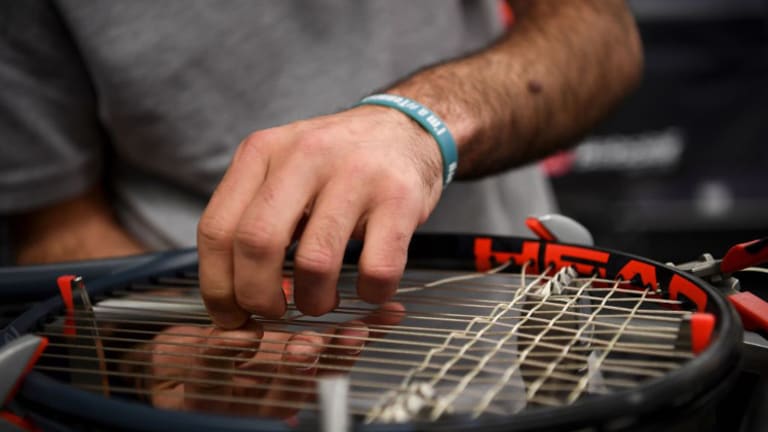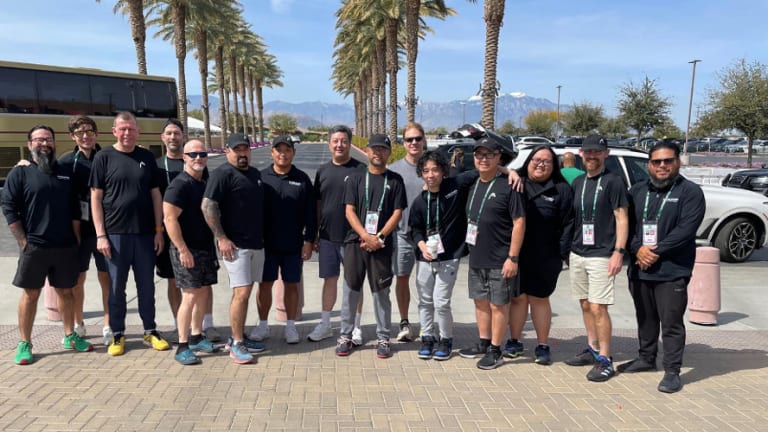When players win a big title like the BNP Paribas Open, it’s customary for them to thank a litany of supporters. It usually starts with their coaches and family, and moves on to trainers, agents, fans, sponsors, ball kids, and perhaps even a higher power. Yet someone who was much more valuable than even divine intervention will often go unrecognized. Tournament stringers are a little like chair umpires—they’re only noticed when something goes wrong.
With so many on-court variables out of their control, players need the peace of mind that their equipment is not one of them. The California desert wind can cause a wayward forehand, but their racquets and strings can’t be the source of any turmoil. Which is why players put their faith in the steady hands at the Indian Wells stringers room. Players know a racquet is only as good as its string job, and these stringers are some of the best in the world.
The stringing room at Indian Wells is outfitted and run by Head. Mitch Case has been a part of the stringing team since 2021. He’s also a PTR certified coach, GRSA Certified Tour Stringer and has been a TENNIS.com racquet tester for the past decade. It’s fair to say he and his colleagues in the stringing room know equipment. We asked him for a peek behind the curtain at a high-profile tour event.
Q. You’ve been stringing at IW for several years now. Describe what the stringing room at a big-time tour event is like.
CASE: Honestly, it’s not very glamorous. The space is entirely dedicated to the work at hand. We have room for 11 primary stringers and machines, a center area where racquets are prepped to be strung and stenciled after being strung, a front desk area for players, coaches or entourage to drop and pick-up racquets, and a back room area with an extra machine, drinks, snacks, and basic supplies. In addition to the 11 stringers, we have two team members that work the center area, and two front desk/back-up stringers, plus two to three managers from Head that help and work from the room. Like many of the necessary tournament services, we’re located in a temporary trailer just outside the stadium's player area—(at Indian Wells) we’re the closest to the stadium to make it quick and easy for players to drop off or pick up racquets.
Of the stringers/front desk, eight of the team members have Grand Slam experience, while the remaining five have Master’s 1000 experience. It’s a very strong team.
In terms of atmosphere, it’s not at all what most people think: Stringer interaction with the pro players is typically pretty minimal. Most of the interactions happen with front desk staff and a member of the player’s team, (for example a) coach, hitting partner, parents, etc. Occasionally, players and coaches will say hi, or joke around with the room—especially if they recognize team members from other tournaments—but most of the time it’s a very quick, “Hello. Can I have them for tomorrow, 10 a.m.? Thanks, see you later.”


